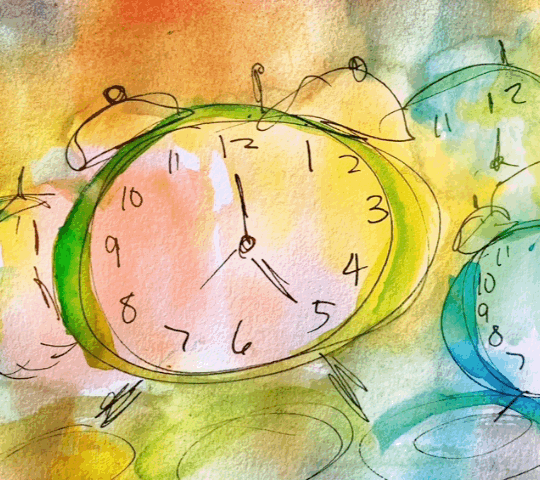In 1999 when I wrote and illustrated my first book, I was obsessed with getting it done. Everything in my existence was about writing that book. There was no social media, I didn’t own a TV. The text just poured out of me as if I was taking dictation from the nine modern day muses (and a bodyguard) I was writing about. They entertained me with their humor and surprised me with their wisdom. I wrote eight to ten hours a day.
My boyfriend would bring in the local events publication and read to me all he was missing because I was writing. I didn’t crack. My book didn’t become the casualty, he did. A new career and a big advance were a reward from that book, but so was the love affair I began with writing and illustrating. No trickery was used in the writing of this book.
Then in 2006 I wrote and illustrated my second book. I lived in a remote town in the high desert outside of San Diego with someone as incompatible with me as cookies are with tar. Writing and illustrating became the therapy that got me through in this relationship, as well as distancing myself from a toxic family.
Writing The Awe-manac: A Daily Dose became a daily dose of sanity and plugged me into who I am when I’m creative, focused, and having fun. It saved me. It won an award. No trickery was used in the writing of this book either.
[Congratulations, if you’ve read to this point, you’ve exceeded the average attention span which, according to psychologist, Gloria Mark, is now at 47 seconds. Applause.]
In 2012 I struggled to write and illustrate my last book because, like many, the internet and social media fractured my concentration; I became addicted to the dopamine those sites are designed to elicit. It was painful how hard it was to write The Muse is In. I was required to finish it to get the other half of my publisher’s advance or it might still be in a neglected file on my computer. I was in desperate need of trickery.
Since then, I’ve written countless articles, scripts for my story podcast, speeches, and an abundance of poetry. I do those things because I have deadlines, the writing is short, and I work around my fractured concentration by remembering that writing and illustration is not optional in my life, it’s a requirement for my sanity and I love it.
Patricia Highsmith, author of Strangers on a Train and The Talented Mr Ripley, said, that without writing she was miserable.
Psychologist, Jordan Peterson said, “The worst thing for creative people is not to be creative because they just die.”
Poet, Mary Oliver said: “The most regretful people on earth are those who felt the call to creative work, who felt their own creative power restive and uprising, and gave to it neither power nor time.”
Writing naturally brings up fear: Where do I start? Is it good enough? Will it get rejected? Did someone already write it? Will is amount to anything? Therefore, resorting to the dopamine dealt on the internet instead of dealing with fear is often a no-brainer… so to speak. Therefore, trickery is needed.
I’ve been hobbling along on three books since my last one. Writing books, for me, requires deep concentration on an idea in a sustained amount of obsessed concentration, long enough to take it out of surface crap that happens with divided attention to the depth that happens when associations awaken the natural brilliance available in the subconscious – brilliance we all have. But we must sneak around the Distraction Tyrant.
I’ve made progress. Instead of fearing my books will never be written, I never give up. The three things that help the most:
1. Working with a friend or group in what I call Parallel Universe Time.
We work in our separate spaces on our separate work, but hold the space for each other with the agreement of not giving in to distractions. I’ve been doing this for 15 years with a group you are invited to join for free. The link and details are below
2. I practice letting go of results and pressure. I realize any time I’m writing, I’m in my bliss no matter whether it turns into a book or not. This makes the enjoyment evident and increases the chance that I’ll return. This took practice to get out of feeling the writing must go someplace for it to be worthwhile. Practice means believing a little at a time versus 100% that writing without results is still important.
3. Mindfulness: Catching my desire to abide the Relentless Habit Tyrant’s enticements and deciding to have enough foresight to imagine the good feeling and relief I’ll have showing up for myself versus the hollow feeling that comes from giving in to the internet or Netflix. I make a deal to write or do art for just 30 seconds before being distracted.
What typically happens is the dopamine that arises from creative work is deeper, richer, and more rewarding than that which comes from social media or buying another throw-rug from Etsy. I have never stopped at 30 seconds ( what IS this need for throw rugs?!).
The Relentless Habit Tyrant requires trickery. It only takes 30 seconds to dislodge me from the insidious automatic trance that leads to being miserable, dying, and pthe ssible regret Highsmith, Peterson, and Mary Oliver refer to.
I don’t have to do it ALL the time, but it works most of the time, and that’s close enough.
More information about Parallel Universe Time:
https://www.mynewsletterbuilder.com/email/newsletter/1416824441
Jill







